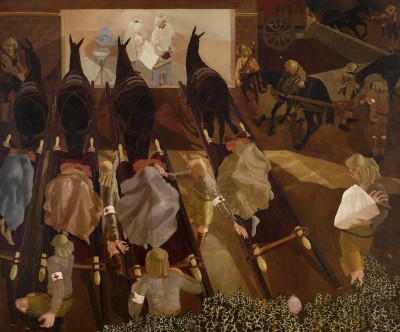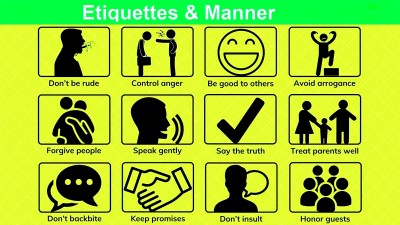Course description
Forests – Earth’s Lungs – and Deforestation in Bangladesh
 “A nation that destroys its soil destroys itself. Forests are the lungs of our land, purifying the air and giving fresh strength to our people.” Franklin Delano Roosevelt, US President, 1933 - 1945
“A nation that destroys its soil destroys itself. Forests are the lungs of our land, purifying the air and giving fresh strength to our people.” Franklin Delano Roosevelt, US President, 1933 - 1945
Forest: anywhere that has a high concentration of trees, any kind of tree. Of course, ‘high concentration’ is a loose term and there is no fixed standard. A wood is usually thought of as smaller than a forest but it all depends where you are. Some areas in Russia, called ‘woods’, would be vast forests in Europe. Then there is rain forest and jungle – both tropical – but the word ‘forest’ includes them all.
 In these times of ecological crisis, it is trite to say that the world’s forests are its lungs but they really are that important. The forests clean up and cool down our atmosphere. They give off steam in the day, putting water back in the system in the form of clouds. They are also home to an incredible number of plants and animals. The common chicken is originally a jungle bird; and rubber and aspirin are taken from jungle plants.
In these times of ecological crisis, it is trite to say that the world’s forests are its lungs but they really are that important. The forests clean up and cool down our atmosphere. They give off steam in the day, putting water back in the system in the form of clouds. They are also home to an incredible number of plants and animals. The common chicken is originally a jungle bird; and rubber and aspirin are taken from jungle plants.
As we have said, jungle is not the only kind of forest, far from it. In non-tropical regions, there are pine forests, both highland and lowland; and deciduous forests that include trees which lose their leaves in winter.
Returning to the tropical forests, rain forest has a high, tree-top roof which cuts out sunlight to the forest floor and means that few plants grow there between the long, tall trunks. Jungle, on the other hand, does not have this tree roof or ‘canopy’ and so the jungle floor is thick with plant life; in places so thick that it is impossible to walk through.
This is rarely a problem in northern deciduous forests, and pure pine forests are positively sterile with almost nothing growing between the trees and very few animals, even small ones, making their homes there.
 Forest once covered almost all of the world’s land but, as the earth dried, so the forests thinned and gave way to plains and parkland. This deforestation speeded up when humans discovered how to use fire and how to make axes. As human beings were forced to turn to farming, the deforestation happened even faster as people cleared large areas of forest to plant the new crops.
Forest once covered almost all of the world’s land but, as the earth dried, so the forests thinned and gave way to plains and parkland. This deforestation speeded up when humans discovered how to use fire and how to make axes. As human beings were forced to turn to farming, the deforestation happened even faster as people cleared large areas of forest to plant the new crops.
At first, this land stolen from the forest by burning is fertile and productive, in part because the ash from the burnt trees and bushes enriches the soil. But, in just one or two years, the soil becomes almost useless and people move on to chop and burn down another area. While the population is low, the forest can grow back in time but, as it increases, so the forest begins to disappear more and more quickly.
Which brings us to the human-forest relationship. There is some debate about the most natural habitat for early human beings but everyone agrees that, as a species, we have spent a lot of evolutionary time living in, or very near, different kinds of forest.

The human beings most physically adapted to living in forests are the Pygmies of the Congo in central Africa. Hundreds of generations of living deep in the rain forest have caused the Pygmies to become much shorter and smaller. A very short, light person can run through forest more easily than a tall, heavy one and also climb higher or further out along a branch. Most humans are not so well adapted to forest life and have preferred living on the edge of a forest or in large clearings in it. In this way, human beings can use the resources of the forest by day – gathering fruit or hunting and trapping animals – but avoid the many dangers of passing the night among the trees.
However, if enemies threaten, it is to the nearby forest that people run, with their animals, to hide. The forest was and is both a place of danger and a place of safety which is perhaps why it is a frequent feature of fairy stories and folk tales, where it presents endless possibilities for discussing good, bad and the unknown.

Robin Hood, a real person by the way, could not have survived without Sherwood Forest to hide in and, even in modern times, guerrilla armies always do better where there are large jungles or forests nearby, from Vietnam to the Ukraine to Colombia. But, as the forests shrink, bandits and guerrilla fighters have fewer places to hide.
And the forests are still shrinking. One main reason is the logging and timber industry. So many things, from matches to bridges, from spoons to houses, are made, at least in part, of wood. As if these were not enough, most of the world’s paper, and there is a lot of paper used these days, comes from breaking trees down into a kind of powder.
 The result is that the Amazon jungle, the Congo basin forest and all the other forests of the world, great or small, are disappearing. We are told that an area the size of Wales or Massachusetts or Switzerland is being cut down in the Amazon every year but we find it hard to stop and still live our modern lives the way we like. We are ripping out our own lungs and, if we don’t stop soon, the earth will get sick and we, the human race, will die. If we cannot save the forests, we cannot save ourselves.
The result is that the Amazon jungle, the Congo basin forest and all the other forests of the world, great or small, are disappearing. We are told that an area the size of Wales or Massachusetts or Switzerland is being cut down in the Amazon every year but we find it hard to stop and still live our modern lives the way we like. We are ripping out our own lungs and, if we don’t stop soon, the earth will get sick and we, the human race, will die. If we cannot save the forests, we cannot save ourselves.
 And if the situation in South America seems too far away to affect you, just take a look at what is happening here at home in Bangladesh. Forests that used to account for 15% of the country’s land in 1960 now cover only 4%, with deforestation happening at the rate of 8,000,000 hectares a year. The main causes seem to be clearing trees for cultivation of crops and logging. It is estimated that a sustainable rate for clearing forests is 1.3% a year, so that these or other lands can be re-planted, but, in fact, deforestation is continuing at a rate of 4.3% currently.
And if the situation in South America seems too far away to affect you, just take a look at what is happening here at home in Bangladesh. Forests that used to account for 15% of the country’s land in 1960 now cover only 4%, with deforestation happening at the rate of 8,000,000 hectares a year. The main causes seem to be clearing trees for cultivation of crops and logging. It is estimated that a sustainable rate for clearing forests is 1.3% a year, so that these or other lands can be re-planted, but, in fact, deforestation is continuing at a rate of 4.3% currently.
There are four major types of forest in this country: mixed evergreen, deciduous, mangrove and freshwater swamp. The mangrove forests, the most famous of which is the Shundarban and the mixed evergreen ones cover the most land.  However, when we cut these down, we need to remember that we are not just losing trees but many different species of plant and animal. Bangladesh, although a small country, is home to 1,952 invertebrates, 653 species of fish, fifty amphibians, and 147 types of reptile, 566 kinds of birds and 127 mammals. The Shundarban, for instance, is the natural habitat of the Bengal tiger, the Ganges and Irrawaddy dolphins, saltwater crocodiles and over 150 species of birds. Some of these animals only live in this region. But the crisis does not end there. Deciduous forests are the natural habitat of the Bengal fox, the mongoose, the golden jackal and the jungle cat, among many others.
However, when we cut these down, we need to remember that we are not just losing trees but many different species of plant and animal. Bangladesh, although a small country, is home to 1,952 invertebrates, 653 species of fish, fifty amphibians, and 147 types of reptile, 566 kinds of birds and 127 mammals. The Shundarban, for instance, is the natural habitat of the Bengal tiger, the Ganges and Irrawaddy dolphins, saltwater crocodiles and over 150 species of birds. Some of these animals only live in this region. But the crisis does not end there. Deciduous forests are the natural habitat of the Bengal fox, the mongoose, the golden jackal and the jungle cat, among many others.
As many as 20% of these species are either critically endangered or endangered. And before we dream that there is still time to protect them, let us not forget that Bangladesh lost 31 species of vertebrates (eleven of which were mammals) in the twentieth century, most in the last few decades since independence.  Nineteen mammal species are critically endangered and some of them on the verge of extinction, including the long-tailed macaque, the hog deer and the Malayan sun bear. Many of these are hunted so that they can be illegally exported for body parts or as pets or to be caged in zoos. Others are killed for their meat or by increasing traffic. However, the most serious threat to wildlife – especially large animals – is the loss of the forests in which they live as more and more trees are cut down to make more space to grow crops and build new homes.
Nineteen mammal species are critically endangered and some of them on the verge of extinction, including the long-tailed macaque, the hog deer and the Malayan sun bear. Many of these are hunted so that they can be illegally exported for body parts or as pets or to be caged in zoos. Others are killed for their meat or by increasing traffic. However, the most serious threat to wildlife – especially large animals – is the loss of the forests in which they live as more and more trees are cut down to make more space to grow crops and build new homes.
Of course, with an ever-increasing population, Bangladesh needs more food and to provide shelter for the poorest people and, so, the choice to protect the forests and wildlife is not an easy one when people have so many pressing needs, but it is urgent nonetheless.
If you want to watch some videos on this topic, you can click on the links to YouTube videos below.
If you want to answer questions on this article to test how much you understand, you can click on the green box: Finished Reading?
Videos :
1. Who are the Congo Pygmies? (10:39)
2. Rainforests | National Geographic (3:40)
3. Deciduous Forest (2:54)
4. The Tropical Rainforest (4:15)
5. Deforestation | National Geographic (2:48)



























